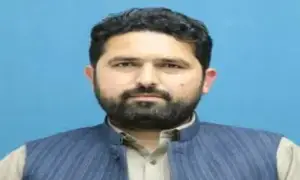Pakistan’s literacy rate rising despite decline in education expenditure
The government’s total spending on education, as a percentage of GDP, declined in the fiscal year 2023. It is estimated to be 1.5% of GDP, down from 1.7% the previous year.
However, the actual expenditure on education-related activities increased by 13.6% during fiscal year 2023, reaching Rs 1,251.06 billion from Rs 1,101.7 billion the previous year.
The Pakistan Social and Living Standards Measurement (PSLM) Survey was not conducted in 2021-22 due to the ongoing Population and Housing Census. Therefore, the latest data on gross enrollment rate (GER) and net enrollment rate (NER) may not be available.
According to the Labour Force Survey 2020-21, the overall literacy rate increased from 62.4% in 2018-19 to 62.8% in 2020-21. This increase was more prominent among males, rising from 73% to 73.4%, compared to females, which increased from 51.5% to 51.9%.
The literacy rate improved in both rural (from 53.7% to 54%) and urban (from 76.1% to 77.3%) areas. The gender gap in literacy appears to be narrowing over time.
At the provincial level, the literacy rate increased in all provinces, with the highest rates in Punjab (66.1% to 66.3%) and the lowest in Balochistan (53.9% to 54.5%).
Read more:
Pakistan sees significant increase in donkey population
Life expectancy rising in Pakistan, Economic Survey reveals
Pakistan’s public debt soars to Rs67,525 billion
The overall literacy rate for those aged 10 years and older is 60%, with males being more literate than females. Punjab has the highest literacy rate, while Balochistan has the lowest.
For youth (15-24 years), the literacy rate is 72%, with males at 79% and females at 65%. The provincial disparities in youth literacy rates also favor males.
The adult literacy rate is 57%, with 68% for males and 46% for females, indicating a significant gender gap in adult literacy.
The out-of-school children (OOSC) rate was 32% nationwide in 2019-20, with a higher rate for females (37%) compared to males (27%). Punjab had the lowest OOSC rate (24%), while Balochistan had the highest (47%).
For the latest news, follow us on Twitter @Aaj_Urdu. We are also on Facebook, Instagram and YouTube.














Comments are closed on this story.